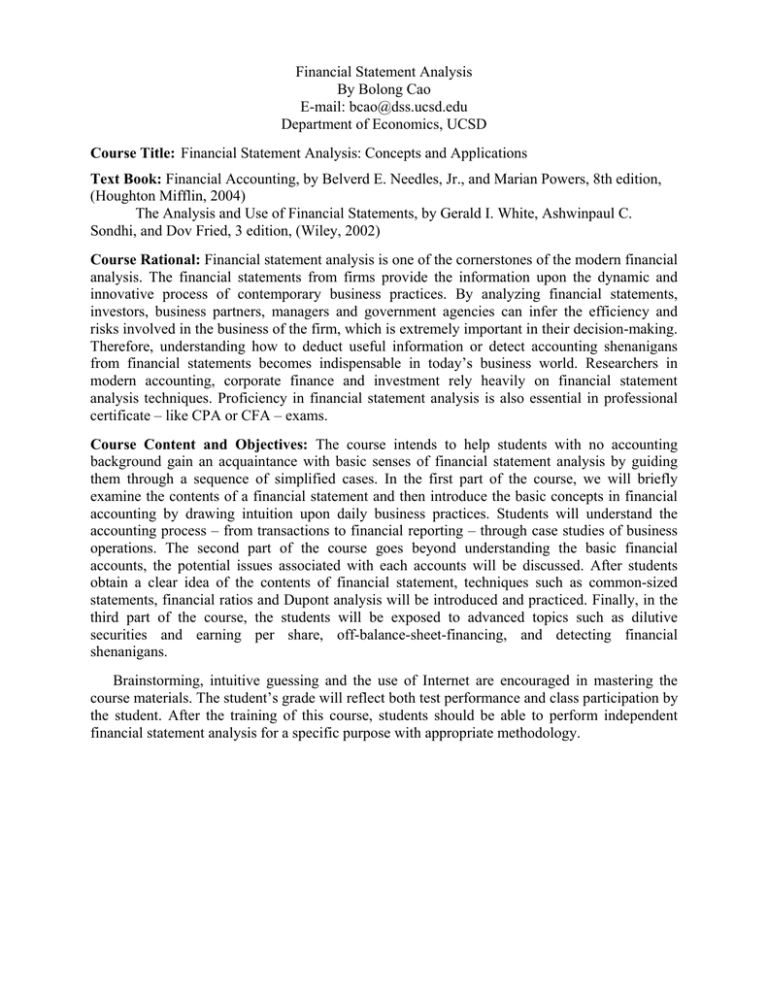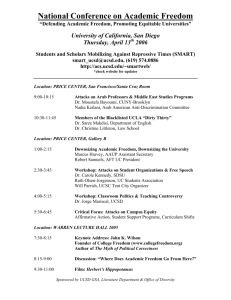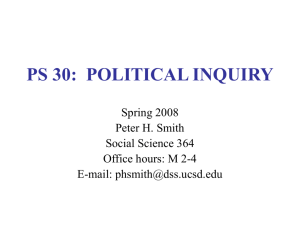Financial Statement Analysis By Bolong Cao E-mail: Department of Economics, UCSD
advertisement

Financial Statement Analysis By Bolong Cao E-mail: bcao@dss.ucsd.edu Department of Economics, UCSD Course Title: Financial Statement Analysis: Concepts and Applications Text Book: Financial Accounting, by Belverd E. Needles, Jr., and Marian Powers, 8th edition, (Houghton Mifflin, 2004) The Analysis and Use of Financial Statements, by Gerald I. White, Ashwinpaul C. Sondhi, and Dov Fried, 3 edition, (Wiley, 2002) Course Rational: Financial statement analysis is one of the cornerstones of the modern financial analysis. The financial statements from firms provide the information upon the dynamic and innovative process of contemporary business practices. By analyzing financial statements, investors, business partners, managers and government agencies can infer the efficiency and risks involved in the business of the firm, which is extremely important in their decision-making. Therefore, understanding how to deduct useful information or detect accounting shenanigans from financial statements becomes indispensable in today’s business world. Researchers in modern accounting, corporate finance and investment rely heavily on financial statement analysis techniques. Proficiency in financial statement analysis is also essential in professional certificate – like CPA or CFA – exams. Course Content and Objectives: The course intends to help students with no accounting background gain an acquaintance with basic senses of financial statement analysis by guiding them through a sequence of simplified cases. In the first part of the course, we will briefly examine the contents of a financial statement and then introduce the basic concepts in financial accounting by drawing intuition upon daily business practices. Students will understand the accounting process – from transactions to financial reporting – through case studies of business operations. The second part of the course goes beyond understanding the basic financial accounts, the potential issues associated with each accounts will be discussed. After students obtain a clear idea of the contents of financial statement, techniques such as common-sized statements, financial ratios and Dupont analysis will be introduced and practiced. Finally, in the third part of the course, the students will be exposed to advanced topics such as dilutive securities and earning per share, off-balance-sheet-financing, and detecting financial shenanigans. Brainstorming, intuitive guessing and the use of Internet are encouraged in mastering the course materials. The student’s grade will reflect both test performance and class participation by the student. After the training of this course, students should be able to perform independent financial statement analysis for a specific purpose with appropriate methodology.






